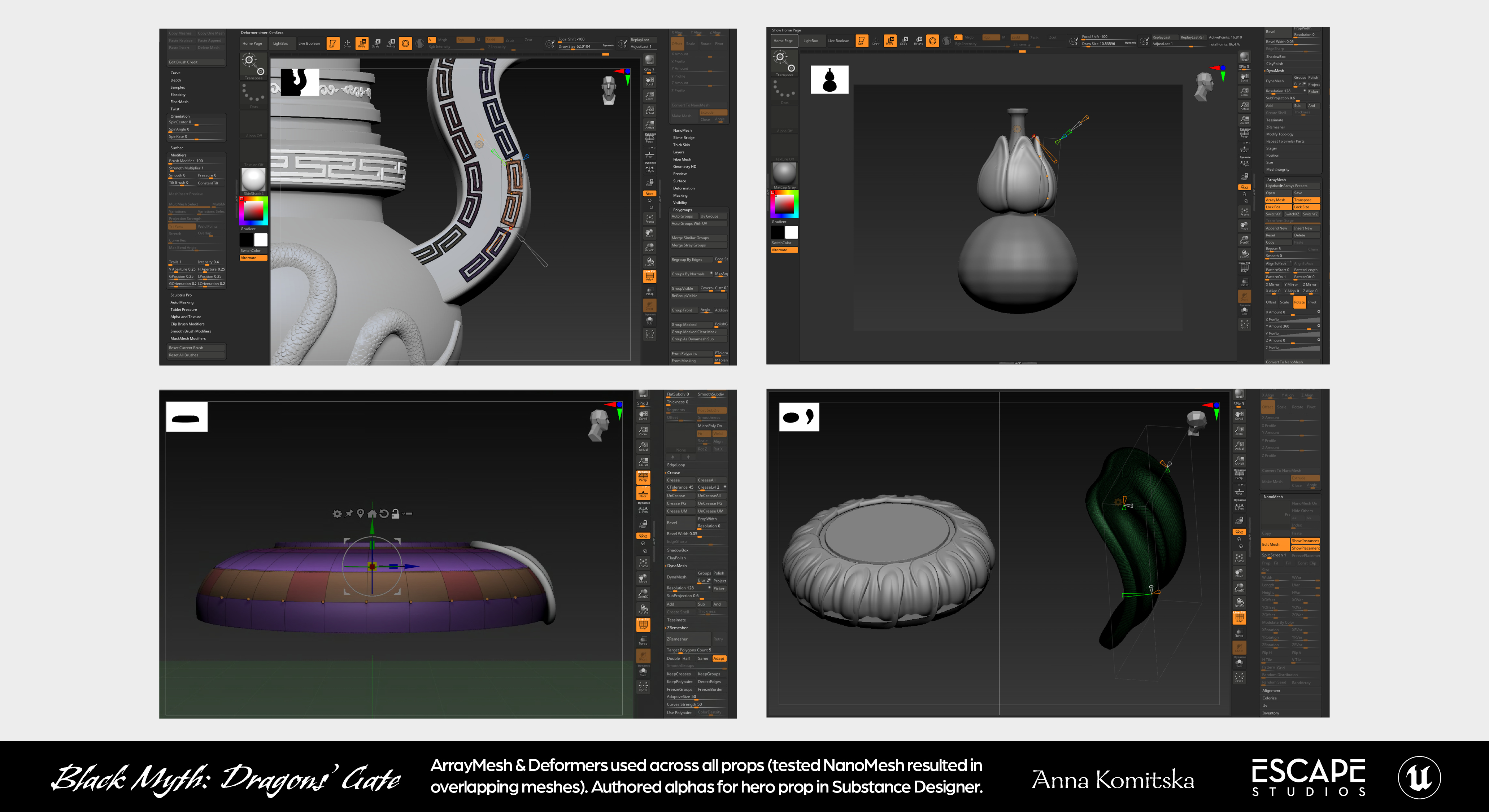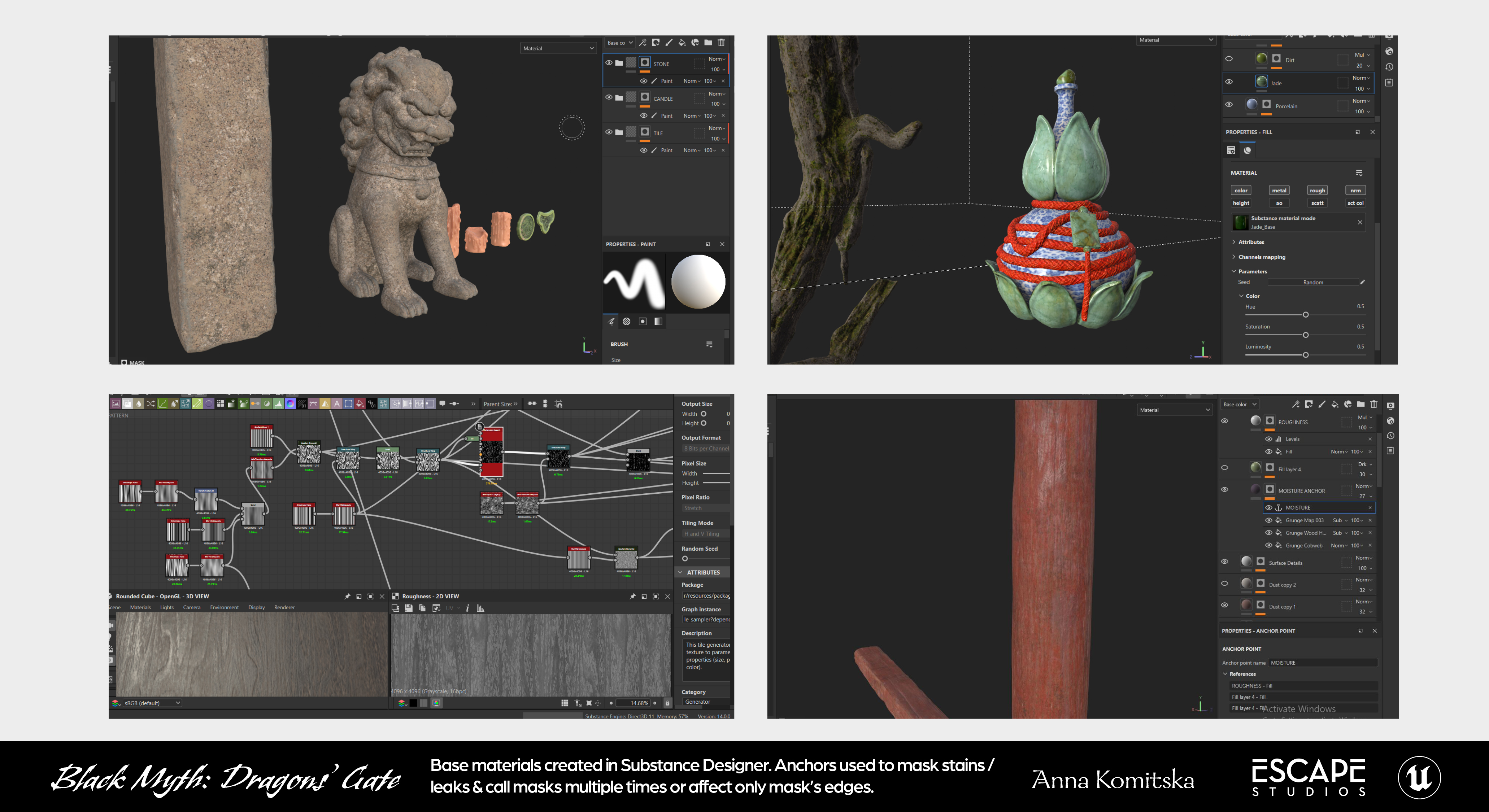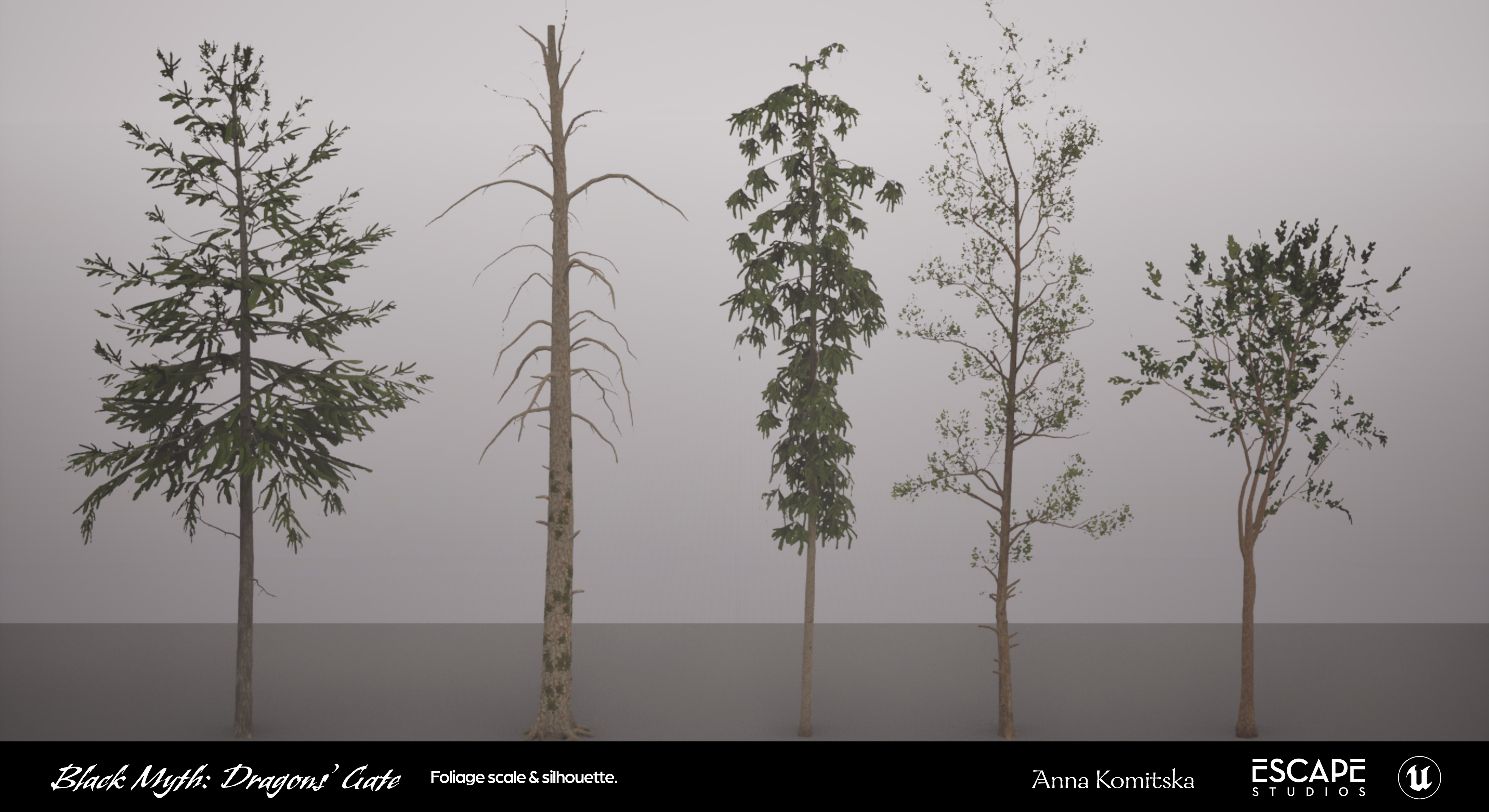Dragons’ Gate
Unreal Engine 5.4, Maya, Zbrush, Substance Painter, Substance Designer, Houdini, Speedtree, Rizom UV. 2025.

"Dragons' Gate" is a 13-week project developed in module 4 at Escape Studios. I worked alongside Tara Mostaghimi and Eren Karadag who were responsible for Creature and Character design. The team was briefed to propose a DLC expansion to Black Myth: Wukong featuring a courtyard containing an interior.




Myself and Tara worked together on the overall DLC concept, story and art direction. We delved into extensive research to ensure that the deliverable would be historically and culturally accurate, and a faithful progression from the original game.
The environment is an ancient setting of ritual, a meditation spot (existing gameplay element recognisable to returning players) hidden in China's sacred mountains before a boss fight location (vista). The Sacred Lotus Temple by Baihu Ridge is protected by a Chinese mythological deity, Yuè Lǎo, God of Fate who weaves ‘the red thread of destiny,’ which binds souls together.

I handled Pre-Production and equipped the team with a daily tasks backlog, weekly progress Kanban tracker on Trello, and provisional schedule in a Gantt timeline. I would track all environment assets filed per type (mesh, texture, blueprint etc.), purpose (architecture, prop, FX etc.), texturing and shader workflow (triplaner, vertex paint etc.); updated when a mesh had been UV'd, baked and ingested; colour coded cells indicated the same trimsheet or tileable texture shared across multiple assets.

After completing the blockout, I generated terrain in Houdini from Lidar data captured in Wutai, China. I furthermore generated slope and curvature masks to scatter foliage procedurally, however, I decided to manually sculpt some of the terrain in Unreal Engine, and thus, used its foliage tool for greater local control.

Based on references from the original gameplay, and considering the small size of the environment, most props were uniquely sculpted, whilst larger structural components above eye level were textured via trimsheets and tileables. I got to apply techniques I had learnt from Zbrush streams by Michael Pavlovich, Paul Gaboury, and Zhelong Xu on sculpting and Zmodeler for hard surface.









The same vertex paint shader was used across most assets in the level. For walls, doors and columns, a gradient dust overlay was added. I added controls for puddles and moisture on the rocks, moss and ground. Tri-planer textures were also used for z-up moss applied procedurally to rocks. The landscape shader contained 4 layers for mud, rock, grass and puddle.







I authored 5 base textures in Substance Designer, with fine detail, dirt and damage added in Substance Painter. The courtyard was nestled in a dense forest, and a substantial portion of the production time was dedicated to building foliage in Speedtree. I used Fronds across the board for optimisation purposes and greater control.


Throughout the final month and a half, I was targeting 30 fps on a Macbook Pro, and I paid special attention to optimisation. Unreal Insights and stat GPU pointed to TSR taking up a significant amount of render time, which is why I switched to TAA. Besides shader optimisation, I used level instancing to organise smaller assets and decrease draw calls. Statistics flagged some high poly meshes after I had accidentally painted foliage very densely in faraway areas, which I culled. Wind, dynamic shadows were disabled, and foliage max roughness threshold was decreased, among others.
I added sound effects and ambient sound sourced from royalty free websites like Epidemic Sounds via Blueprints. A separate dynamic lighting setup was created for the 60 second cinematic rendered with Movie Render Queue and OCIO colour conversion. The cinematic was colour-graded in DaVinci Resolve, and the resulting LUT was applied for gameplay.